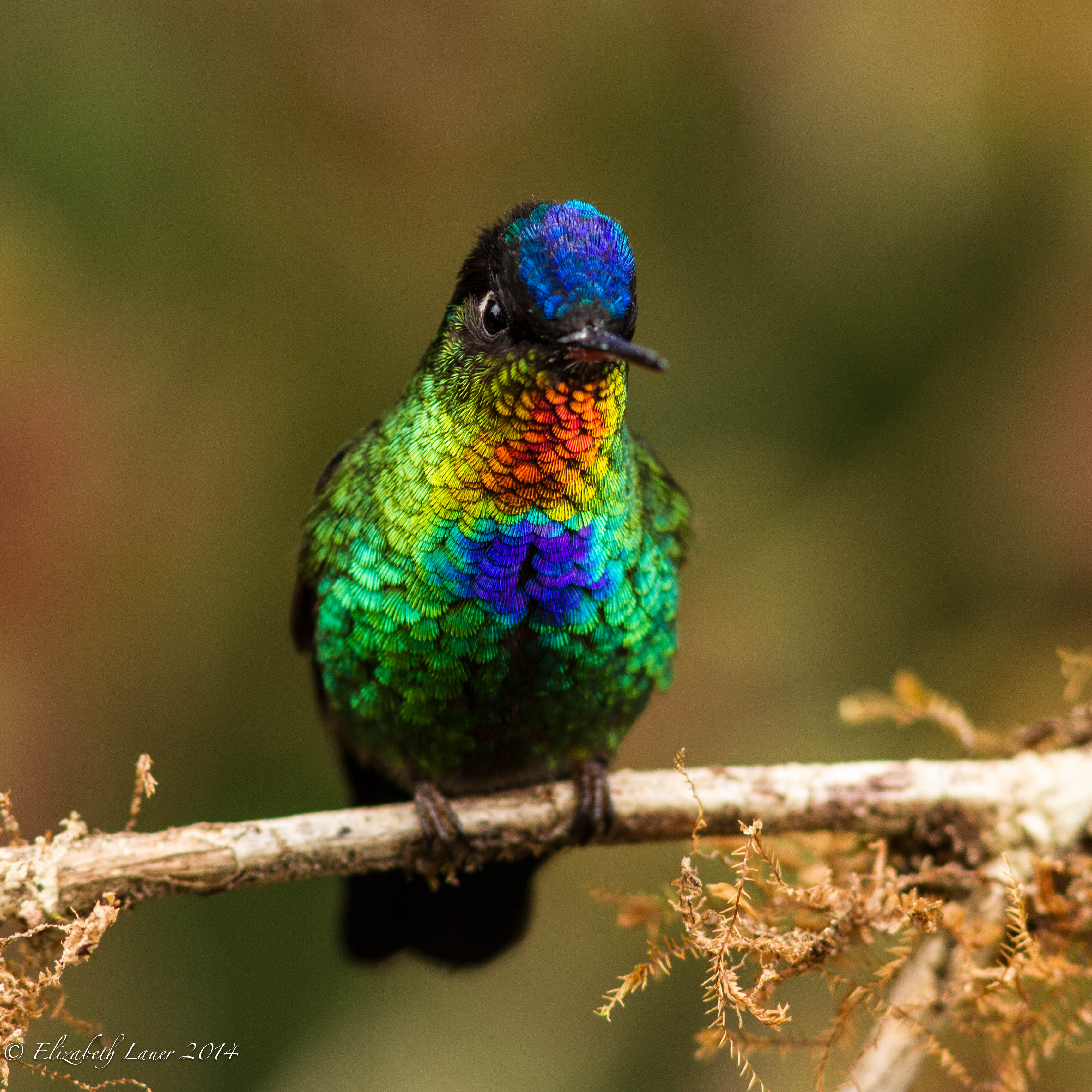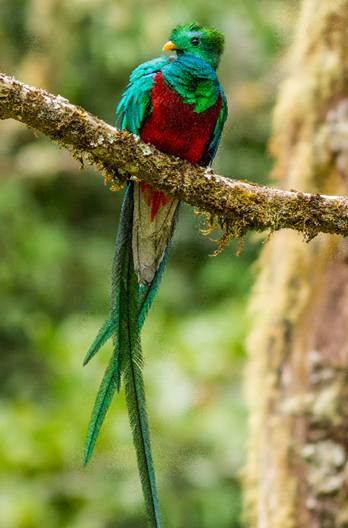Costa Rica -
I : Pacific
Rainforest, the Chiriqui Highlands, and the Caribbean Slope
February 26 - March 8, 2025
Costa
Rica has been blessed with several important ingredients for high biodiversity
– a tropical latitude, tremendous topographic diversity, and a strong
conservation ethic. In addition to
being a physical and ecological link between North and South America, it is
biogeographically rich with tropical deciduous forest,
lowland rainforest, mangroves, beaches, cloud forest, towering volcanoes, and an abundance of
rivers and streams, all of which contribute to a tremendous wealth of flora
and fauna.
From
the spoiled comfort of some of Costa Rica’s finest accommodations – Hotel
Villa Lapas, Suenos del Bosque,
and Rancho Naturalista –
we’ll explore some of these habitats and their rich wildlife.

We
begin and end our trip at the lovely Hotel Bougainvillea which is well known for
its comfortable rooms, excellent service, and productive garden. Among the
roughly 50 species we've seen here are common and widespread species like
clay-colored
thrush and cinnamon-bellied (grayish) saltator and less common species such as white-eared
ground-sparrow, chestnut-capped warbler, Lesson's (blue-crowned) motmot, crimson-fronted parakeet, and
Cabanis' (plain) and
rufous-naped wrens.
Our
first destination is on the Pacific slope where northwest tropical deciduous forest
meets an isolated patch of lowland rainforest that runs to the border with Panama. From the comfortable
and bird-rich Hotel Villa Lapas, we visit Carara National Park and
the Rio Tarcoles area where we enjoy nice trails, great birds, and
fascinating natural history.
In addition to common species such as yellow-throated
toucan, Hoffman's woodpecker, cocoa and streak-headed woodcreepers, orange-chinned
and orange-fronted parakeets, dusky antbird, and several euphonias, we also
look for regional
endemics including black-hooded antshrike,
fiery-billed aracari, the Cherrie’s race of scarlet-rumped tanager, Baird’s trogon, orange-collared
manakin, riverside wren, and Costa Rican swift.
This is also one of the few spots in the country where scarlet macaws are
common.
Mammals that we've seen in the past include mantled howler and white-throated capuchin
monkeys, white-nosed coati, nine-banded armadillo, several species of bat,
kinkajou, variegated squirrel, and Central American agouti.
Of course, we also learn about plant ecology, insects, reptiles, and
amphibians as we explore the general natural history and ecology of the
lowland neotropics. While in the Carara area we also do a boat trip
on the Rio Tarcoles where waders, frigatebirds, anhinga, double-striped
thick-knee, collared plover, American crocodiles, and much more can be seen.
We
then head to the highlands and Suenos del Bosque, a beautiful place
with excellent food and top-notch service.
Here in the cool cloud forest, we learn about a very
different habitat and an almost completely different suite of birds, many of
which are endemic to the Chiriqui Highlands of Costa Rica and Panama.
While the biggest avian attraction is the resplendent quetzal, we
also have good opportunities to see fiery-throated and volcano hummingbirds, white-throated
mountain-gem , ruddy treerunner,
buffy tuftedcheek, yellow-winged vireo, golden-browed chlorophonia,
black-cheeked and flame-throated warblers, long-tailed and black-and-yellow
silky-flycatchers, sulphur-winged
parakeet, and large-footed finch and yellow-thighed brushfinch. Some of the less common
birds that we've had pretty good luck with include Costa Rican pygmy-owl, dusky
nightjar, wrenthrush, scaled antpitta, and spotted wood-quail.
, ruddy treerunner,
buffy tuftedcheek, yellow-winged vireo, golden-browed chlorophonia,
black-cheeked and flame-throated warblers, long-tailed and black-and-yellow
silky-flycatchers, sulphur-winged
parakeet, and large-footed finch and yellow-thighed brushfinch. Some of the less common
birds that we've had pretty good luck with include Costa Rican pygmy-owl, dusky
nightjar, wrenthrush, scaled antpitta, and spotted wood-quail.
We
conclude our trip at Rancho Naturalista. The
very nice rooms, excellent
food, productive hummingbird and fruit feeders, and impressive property list make
this lodge one of Costa Rica's best
birding and wildlife destinations.
The hummingbird
feeders attract crowned woodnymph, white-necked jacobin, green-breasted mango,
bronze-tailed plumeleteer, violet sabrewing, and green hermit, while
the Verbena
flowers in the garden are great for smaller species such as stripe-throated hermit,
black-crested coquette, green thorntail, and the local star, the snowcap, a
diminutive chestnut-purple jewel with, as the name implies, a snow-white
crown.
Other "special
attractions" at Rancho include; a bug light that attracts up to twenty
species, including woodcreepers,
warblers, white-breasted wood-wren, red-throated ant-tanager, tawny-chested
flycatcher, and orange-billed sparrow; superb trails through good forest where
birds such as plain antvireo, spotted and dull-mantled antbirds, brown-billed
scythebill, white-ruffed manakin, scale-crested pygmy-tyrant, stripe-breasted
and black-throated wrens, bicolored hawk, and many others are found; porch feeders where collared
aracari, the Passerini's race of scarlet-rumped tanager, gray-headed chachalaca, mourning warbler,
black-striped sparrow, Montezuma oropendula, and other eye candy can be seen;
and a narrow stream with a series of pools that, in the late afternoon, attract
bathing purple-crowned fairy, snowcap, crowned woodnymph, tawny-throated
leaftosser, and scaly breasted wren.
Costa Rica's long standing
popularity with nature-based tourists is well deserved as it's an easily reached destination with superb infrastructure, easy
access to many habitats, and many warm, talented people who help put together a
memorable trip.